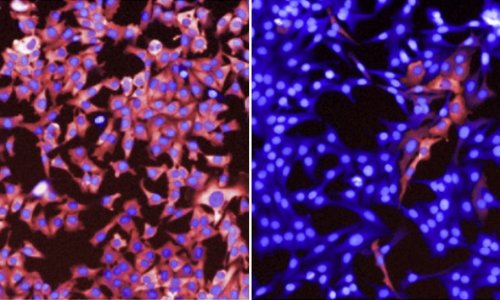New Skin Cancer Patch: Possible Alternative to Surgery
A new study shows that a radioactive skin patch can safely and successfully treat basal cell carcinoma, one of the most common types of skin cancers, according to researchers from India. The skin patch, which delivers the radioactive phosphorus-32, is nontoxic and could be an excellent alternative to surgery or radiotherapy in cases where carrying out these treatments is difficult.

"While basal cell carcinoma is rarely fatal, it can be a painful and disfiguring disease," said Priyanka Gupta, a nuclear medicine technologist in the Department of Nuclear Medicine at All India Institute of Medical Sciences, New Delhi, and lead author of the study. "It's exciting to think that this patch can deliver treatment on an outpatient basis with little risk of the scarring or other complications that surgery or radiotherapy present. This study opens a new dimension not only for treating skin malignancies, but also for nuclear medicine therapy in general."
Every year, approximately one million Americans are newly diagnosed with basal cell carcinoma, a type of skin cancer that forms in the epidermis, or outer layer of the skin. The cancer is not deadly in most cases, but it still must be treated to prevent spreading. The most common forms of treatment are surgery and radiotherapy. Surgery requires hospitalization, and radiotherapy involves multiple visits to a radiotherapist. Neither treatment provides a complete cure. For patients with cancers on the face, these treatments can leave permanent scarring and can be complicated to deliver, especially for cancers that are close to the eyes, nose or mouth. In 80 percent of the cases, basal cell carcinomas appear on the head or neck.
The study followed eight adult patients who elected to try the patch instead of surgery or radiotherapy. All patients had basal cell carcinoma on the face, and none had cancer cells in underlying facial structures. Sealed patches containing radioactive phosphorus-32 that deliver beta radiation to the cancer site were custom-made according to the shape and size of each patient's skin cancer lesions. The patches were applied locally on the cancer sites for three hours. The patches were then reapplied to each patient's cancer sites two more times on subsequent days, each time for three hours. The treatment took about a week to administer.
Three months after treatment, biopsies of all of the patients' skin cancer sites revealed no residual malignant cancer. The treatment had few adverse effects and resulted in minimal scarring. In addition, routine blood and biochemical exams did not reveal any toxicity from the radioactive patches. Phosporous-32 poses no external radiation hazards, and its limited range prevents beta radiation from reaching the bone or underlying blood vessels, thus sparing the bone and bone marrow.
P. Gupta, A. Malhotra, S. Saxena, S. Gupta, G.P. Bandhopadhyaya, M. Venkatesh, U. Pandey, Department of Nuclear Medicine and Department of Dermatology, All India Institute of Medical Sciences (AIIMS), New Delhi; and Board of Radiation and Isotope Therapy (BRIT) Bhabha Atomic Research Center (BARC), Mumbai; "Radionuclide therapy of basal cell carcinoma with Phosphorus-32 skin patch
30.07.2009





